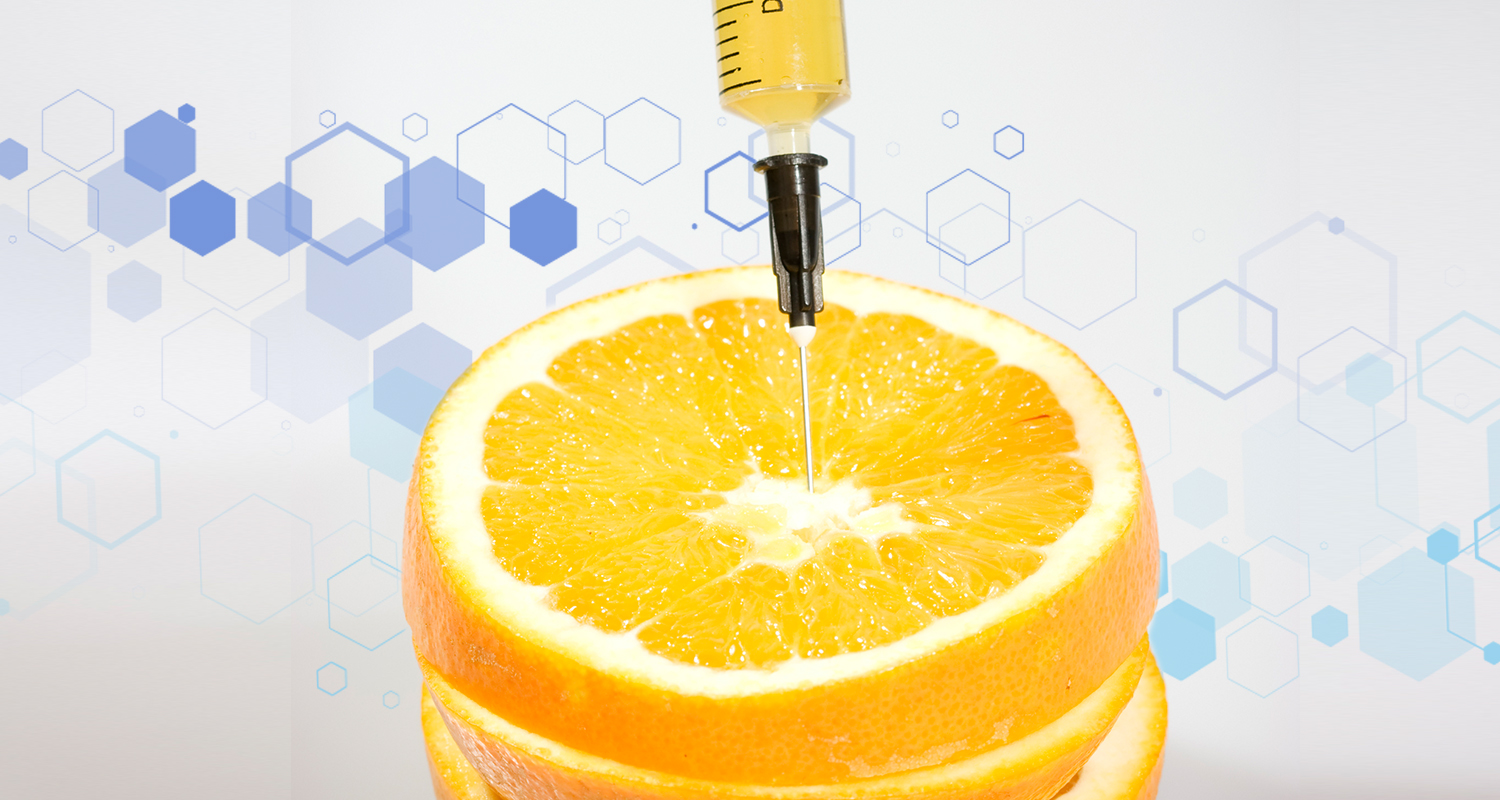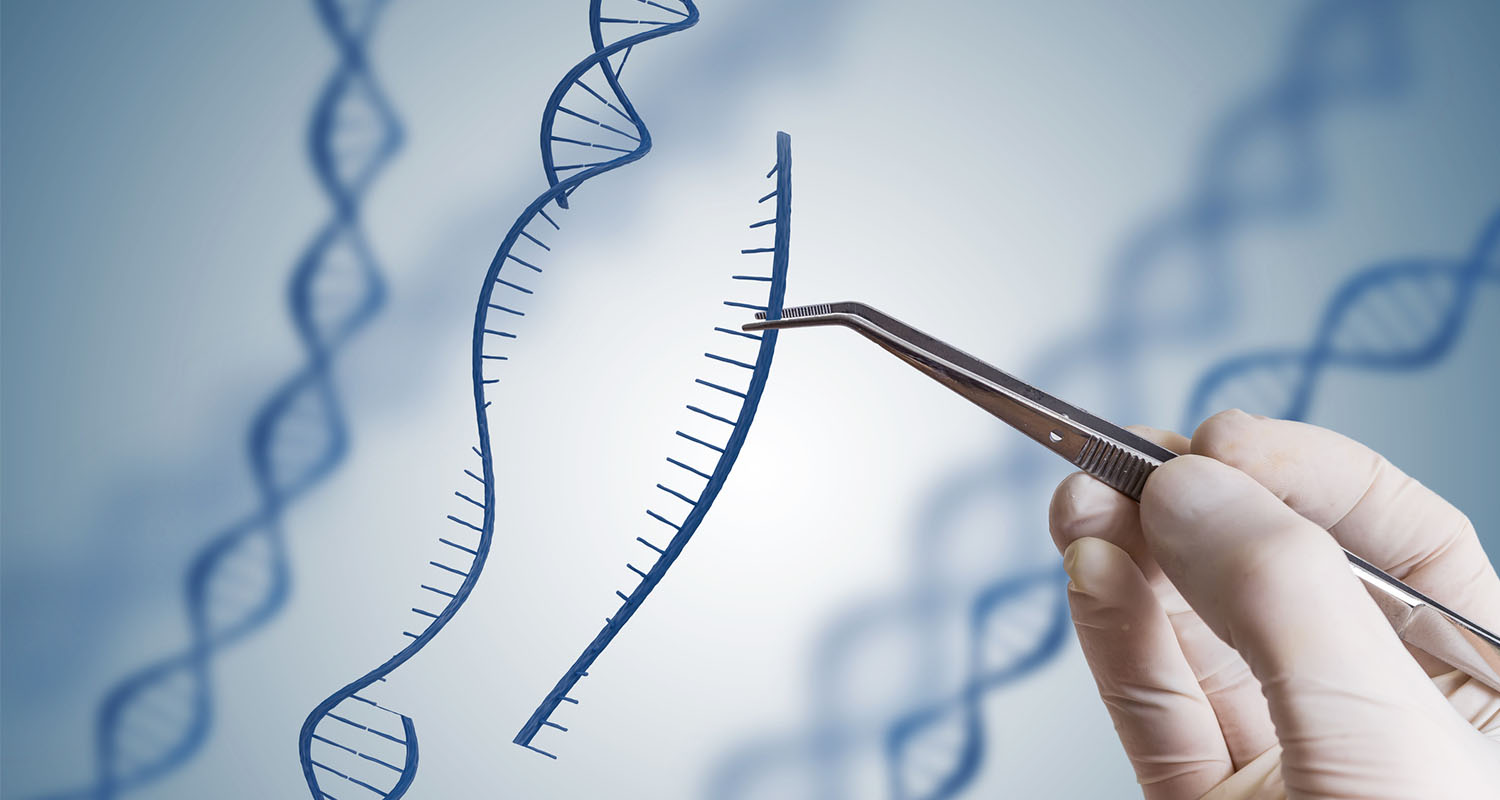
- Genetically modified organisms (GMOs) are organisms that contain artificially altered genetic material that would not otherwise occur in nature.
- While the uses of genetic engineering range from chemical production to pharmaceuticals, its most debated use is in GMO food production.
- The most common GMO foods are corn, cotton, canola, soy, sugar beet, papaya from China or Hawaii, and some varieties of yellow squash.
- To avoid GMO food, look for the “Non-GMO Project Verified” or “Organic” labels.
These days, it’s hard to find a neutral opinion on genetically modified organisms (GMOs). Some call GMO food frankenfoods while others call them scientific progress. Today’s GMO industry profits big corporations, abuses farmers and the environment, and ignores conflicting research on consumer health.
More and more people are demanding to know what foods are GMO, and current labeling laws are no help. No matter where you fall on the GMO debate, you deserve to know what you put in your body. Read on to discover why GMO foods are not on the Bulletproof list, how to recognize and avoid them, and what they mean for our food system today.
What is GMO?
 Genetically modified organisms (GMOs) — also labelled as genetically engineered, bioengineered, or recombinant) — are organisms that contain artificially altered genetic material that would not otherwise occur in nature. Scientists can physically edit the DNA of an organism to achieve a desired change, such as improving the yield of a crop, causing bacteria to produce insulin, or making kittens glow (y’know, useful stuff). When people talk about GMO foods, they’re generally referring to genetically modified plant crops.
Genetically modified organisms (GMOs) — also labelled as genetically engineered, bioengineered, or recombinant) — are organisms that contain artificially altered genetic material that would not otherwise occur in nature. Scientists can physically edit the DNA of an organism to achieve a desired change, such as improving the yield of a crop, causing bacteria to produce insulin, or making kittens glow (y’know, useful stuff). When people talk about GMO foods, they’re generally referring to genetically modified plant crops.
Genetic modification today is different than selective breeding, the age-old process of breeding plants or animals with the most desired traits. This is how (over thousands of years) your ancestors grew wheat with bigger kernels, or turned wolves into corgis. While this breeding did change the genes of those species, today “genetic engineering” refers instead to the direct editing of DNA to cause changes in an organism.
What foods are usually GMO?
 When GMOs were first introduced in the ‘70s, the scientific community greeted them as the future of biology. Scientists now had the technology to edit the genetic master code of organisms, the ultimate biohack. While the uses of genetic engineering range from chemical production to pharmaceuticals, its most debated use is in food production.
When GMOs were first introduced in the ‘70s, the scientific community greeted them as the future of biology. Scientists now had the technology to edit the genetic master code of organisms, the ultimate biohack. While the uses of genetic engineering range from chemical production to pharmaceuticals, its most debated use is in food production.
Today, the most common GMO foods are corn, cotton, canola, soy, sugar beet, papaya from China or Hawaii, and some varieties of yellow squash.
The first GMO food was approved in 1992, and genetically engineered products quickly became staples on grocery shelves.[ref url=”http://sitn.hms.harvard.edu/flash/2015/from-corgis-to-corn-a-brief-look-at-the-long-history-of-gmo-technology/”] While this technology promises crops with bolstered shelf lives, nutrition, and resilience to feed a growing world, the two most common traits engineered into crop plants are herbicide tolerance and insect resistance. Today, 90% of all corn, and 94% of all soy planted in the U.S. are genetically modified to have one or both of these traits, with Monsanto (now Bayer) corporation’s Roundup-Ready and Bt toxin seeds at center stage.[ref url=”https://www.ers.usda.gov/data-products/adoption-of-genetically-engineered-crops-in-the-us/recent-trends-in-ge-adoption.aspx”]
Monsanto’s Roundup-Ready varietals are genetically engineered to resist even high levels of glyphosate, the potent herbicidal ingredient in Monsanto’s popular Roundup weed killer.[ref url=”http://www.monsantoglobal.com/global/au/products/Documents/tech-topic-what-is-roundup-ready-canola.pdf”]This meant farmers could drench their fields in herbicides to kill off weeds without harming their new GMO crops.
Bt toxin crops contain a gene transferred from the bacteria Bacillus thuringiensis, which gives them the ability to produce an insect-killing toxic protein.[ref url=”http://sitn.hms.harvard.edu/flash/2015/insecticidal-plants/”] By nixing pests and weeds, these varieties hugely reduce the amount of labor needed on farms, but their effects on consumer health, the farming industry and the environment are less certain.
Are GMOs safe? GMOs and your health
 GMO foods and their derivatives are not included on the Bulletproof Diet, but their health is a hot topic for debate. Studies are contradicting, and few long-term human or animal studies are available, exposing claims on both sides of the fence to criticism.
GMO foods and their derivatives are not included on the Bulletproof Diet, but their health is a hot topic for debate. Studies are contradicting, and few long-term human or animal studies are available, exposing claims on both sides of the fence to criticism.
Animal studies comparing GMO foods (often corn or soy) to their parent (non-GMO) strains often show significant differences, but vary in how they interpret those results.
While some studies simply claim that GMOs are less nutritious (maybe thanks to faster growth and poorer soil), others link them to organ damage, cancer and hormonal shifts.[ref url=”https://www.sciencedirect.com/science/article/pii/S0308814613019201″][ref url=”https://www.ncbi.nlm.nih.gov/pubmed/27752412″]
Other studies suggest that consuming GMO foods may speed liver stress and aging, as well as cause signs of liver and kidney toxicity.[ref url=”https://www.ncbi.nlm.nih.gov/pubmed/18648843″][ref url=”https://www.ncbi.nlm.nih.gov/pubmed/17356802″] Specific changes in the genes and expression of GMO crops may explain these changes.
DNA and protein comparisons of glyphosate-tolerant GMO corn showed increased oxidative stress within the seeds themselves, and weakened metabolic pathways. These seeds also showed large increases of the polyamines putrescine and cadaverine, which can be toxic in high doses, possibly worsening histamine reactions, and helping form carcinogenic nitrosamines.[ref url=”https://www.nature.com/articles/srep37855″]
Unfortunately, most animal studies are too short to investigate what chronic GMO exposure could mean for you. One longer multigenerational study revealed unhealthy differences in kidney weight, cholesterol regulation and protein metabolism in mice fed GMO corn. This study also exposed negative reproductive effects over multiple generations of mice fed GMO corn, another reason why avoiding GMOs is key to detoxing in order to boost fertility. [ref url=”http://www.herbogeminis.com/IMG/pdf/biological_effects_in_mice.pdf”]
One of the earliest concerns with GMOs was their potential to introduce new allergens to our food supply. In an episode of Bulletproof Radio with Jeffrey Smith, founding executive director of The Institute for Responsible Technology, he warned that altering DNA may cause unforeseen changes downstream in the genetic code, such as mutations that change the function or expression of genes.

Monsanto and GMO crops
 In the case of our food system, the risks of GMO foods go beyond the genetic modification itself. GMOs such as Monsanto’s Bt toxin crops literally produce pesticides themselves — you can’t rinse that off. The Bt Cry-protein toxins formed by these plants do cause immune (but not allergic) responses in animal tests, as well as damage to intestinal goblet cells, and increased kidney weight in pigs fed Bt corn.[ref url=”https://www.ncbi.nlm.nih.gov/pubmed/21298004″][ref url=”https://www.ncbi.nlm.nih.gov/pubmed/21733303″] While the effects of this toxin may be minute, the long term impact in humans is unknown.
In the case of our food system, the risks of GMO foods go beyond the genetic modification itself. GMOs such as Monsanto’s Bt toxin crops literally produce pesticides themselves — you can’t rinse that off. The Bt Cry-protein toxins formed by these plants do cause immune (but not allergic) responses in animal tests, as well as damage to intestinal goblet cells, and increased kidney weight in pigs fed Bt corn.[ref url=”https://www.ncbi.nlm.nih.gov/pubmed/21298004″][ref url=”https://www.ncbi.nlm.nih.gov/pubmed/21733303″] While the effects of this toxin may be minute, the long term impact in humans is unknown.
Even more common, Monsanto’s Roundup Ready crops are designed to withstand extreme doses of weedkiller glyphosate, allowing farmers to spray billions of pounds of glyphosate-based Roundup each year to protect their crops from weeds. In 2015, the World Health Organization declared glyphosate a probable human carcinogen.
The same mineral-chelating effects that make roundup so great for killing bugs, also make it an potent antibiotic in your body. “Most of the antibiotics are in fact chelators, and most herbicides are chelators, and it kills selectively the beneficial good bacteria,” explains Jeffrey Smith, founding executive director of The Institute for Responsible Technology, “That can create an overgrowth of negative gut bacteria in the gut that can create harsh gases which can damage the walls of the intestines.”
In addition to wreaking havoc on bacteria in your gut biome, studies also link glyphosate exposure to numerous health risks, such as celiac disease, hormone disruption, fertility issues, and even cancer.[ref url=”https://www.sciencedirect.com/science/article/pii/S027869151530034X?via%3Dihub”] One recent report demonstrated that even very low chronic doses of the Roundup used on crops resulted in non-alcoholic fatty liver disease in rats.[ref url=”https://www.nature.com/articles/srep39328″]
Not only is glyphosate the most widely used herbicide in the world, it’s also an extremely persistent toxin.[ref url=”https://enveurope.springeropen.com/articles/10.1186/s12302-016-0070-0″] Private research companies have even found glyphosate residue in everything from honey to cereal to human breast milk.[ref url=”https://www.reuters.com/article/us-food-agriculture-glyphosate-idUSKBN0N029H20150410″] Once consumed, your body uses glyphosate indistinguishably from the amino acid glycine, storing it away in proteins in your cells.[ref url=”https://people.csail.mit.edu/seneff/2017/SamselSeneff_Glyphosate_VI_final.pdf”] The same glyphosate used to grow GMO corn, soy and alfalfa for animal feed also sticks around in those animals’ bodies: another reason to stick to meat, milk and collagen from organic, grass-fed animals.
Learn more about how glyphosate could be hiding in your food
GMOs, farming and the environment
 How GMOs impact farmers
How GMOs impact farmers
It turns out there’s a reason there’s so little available research on GMO food safety. The politics of GMOs took a dark turn in 1980, when a supreme court ruling decided that companies could actually own the rights to a genetically modified organism.[ref url=”http://sitn.hms.harvard.edu/flash/2015/from-corgis-to-corn-a-brief-look-at-the-long-history-of-gmo-technology/”] Because of this, companies like Monsanto can call on intellectual property rights to make it illegal for certain researchers to use their products, making it even harder to find reliable, unbiased data on GMO safety.[ref url=”https://grist.org/food/genetically-modified-seed-research-whats-locked-and-what-isnt/”]
Farmers also find themselves backed into a corner by GMO companies. Thanks to government subsidies and low crop values, more and more farmers turn to GMO crops to pay the bills, speeding the demise of small farms and traditional agriculture.
Monsanto’s copyrighted seeds are designed to be sterile, meaning that these farmers are financially and legally tied to Monsanto year and year again to purchase new seeds, pesticides and herbicides. Unfortunately, these plants aren’t actually entirely sterile, and can quietly contaminate neighboring organic or non-GMO fields, risking those certifications.
You can read more on the slimy politics of GMOs and glyphosate, but the bottom line is: avoiding GMOs means supporting the farmers and companies working to create a safer, more sustainable food system.
GMOs and the environment
Genetically modified crops haven’t been kind to the environment either. Dumping glyphosate on farmland is like over-abusing heavy antibiotics, but on a much larger scale. In an episode of Bulletproof Radio, David Bronner, president of Dr. Bronner’s Magic Soaps and GMO awareness advocate, puts this into perspective: “The plants are sick, the soil is sick, the system’s sick. It doesn’t have the natural beneficial organisms. It doesn’t have the natural pest predators. It’s just a completely broken system and they’re pouring more and more and more chemicals into this to get these things to harvest.”
As more weeds become resistant to Roundup, farmers add even more chemicals into the soil, binding nutrients, wiping out beneficial bacteria, and allowing toxin-forming fungi to grow unchecked. These effects don’t stop at the fence, and can destroy waterways and ecosystems downstream. Worse, the chemical runoff isn’t the only thing escaping: bacteria can actually pick up pieces of genetic information from GMO crops. This process is called horizontal gene transfer, and allows bacteria to share and recombine DNA faster than natural mutations. While it may be rare for these mutations to occur successfully in uncontrolled conditions, it poses an unstudied risk to the environment.[ref url=”https://www.ncbi.nlm.nih.gov/pmc/articles/PMC3882822/”]
A new risk is on the horizon as well: Genetically modified salmon have recently been introduced as the first GMO animal for food. Their release has faced huge criticism over concerns for wild salmon populations, and the tribal sovereignty of people dependent on salmon in the Pacific Northwest.[ref url=”https://cagj.org/2018/04/salmon-people-a-backgrounder-to-northwest-tribal-opposition-to-ge-salmon/”]
“[The Institute for Responsible Technology] is against the use of GMOs for food and for outdoor release, but we’re not against the use of, say, drug manufacturing when it’s done in a contained manner, because the equation is different,” says Smith. “We do believe that [companies] need to increase their respect for what can go wrong and the current respect is so low that it’s dangerous.”
GMO labeling and how to avoid GMOs
 How can you tell if your food is genetically engineered? As awareness of GMO technology increases, more and more consumers demand the right to know. Polls consistently show that around 90% of Americans believe GMO foods should be labeled, yet the U.S. has some of the most lax laws surrounding GMO disclosure.[ref url=”https://www.centerforfoodsafety.org/issues/976/ge-food-labeling/us-polls-on-ge-food-labeling”][ref url=”http://www.loc.gov/law/help/restrictions-on-gmos/”]
How can you tell if your food is genetically engineered? As awareness of GMO technology increases, more and more consumers demand the right to know. Polls consistently show that around 90% of Americans believe GMO foods should be labeled, yet the U.S. has some of the most lax laws surrounding GMO disclosure.[ref url=”https://www.centerforfoodsafety.org/issues/976/ge-food-labeling/us-polls-on-ge-food-labeling”][ref url=”http://www.loc.gov/law/help/restrictions-on-gmos/”]
The limitations of GMO labeling
The National Bioengineered Food Disclosure Law, signed in 2016, will make it mandatory for producers to label foods containing GMOs, but it won’t exactly make the information any more accessible for consumers. Instead of risking public opinion by printing the word “GMO” or “Bioengineered” on their boxes, producers can opt to hide that information behind a QR code or toll free telephone number. (Because who doesn’t love waiting on hold in the middle of the grocery store?) To make things more confusing, the law will exclude GMO food served at restaurants, animal products made using GMO feed, and GMO processed foods such as oils or sugars, which do not contain DNA.[ref url=”https://cspinet.org/news/abcs-gmo-disclosure-united-states-20170925″]
Myth: PLU labels beginning with “8” indicate GMO produce: while it’s true that the PLU gods did intend this to be true, the indicator never made it to retail. As of 2015, these codes are back in circulation for general produce. Fortunately, you can use PLU codes beginning with “9” to find organic produce, which are always non-GMO.[ref url=”https://www.ifpsglobal.com/Identification/PLU-Codes”]
To keep GMOs out of your food:
Know the most common offenders: The most common GMO crops are corn, cotton, canola, soy, sugar beet, papaya from China or Hawaii, and some varieties of yellow squash.
Eat organic: Both the Certified organic and non-GMO Project Verified labels guarantee that a product is non-GMO. When it comes to produce, avoid common GMOs by looking for either of these labels. And, as mentioned above, PLU codes beginning with a “9” signify organic produce.
Avoid processed foods: Products made with common GMO foods are harder to identify, but carry the same risks. A recent Environmental Working Group (EWG) report found glyphosate in almost all samples of oat-containing processed foods, including breakfast cereal, granola bars and oatmeal.
Read ingredient lists: Many additives are processed forms of GMO foods, under sneaky names like lecithins, syrups, alcohols, aspartame, maltodextrin, citric acid, dextrose, xanthan gum, and certain vitamins, vinegars and yeast. If you eat non-Bulletproof sweeteners, look for sugars with a known source, such as pure cane sugar, maple sugar or coconut sugar, as the general label “sugar” often comes from GMO sugar beets.
Choose grass-fed, organic meat: Opt for grass-fed, organic meats and dairy to avoid toxic residues from GMO feed, and rbST/rbGH/artificial hormones harvested from GMO bacteria.
If you’re following the Bulletproof diet, you’re already steering clear of GMO food like highly processed foods, grain-fed meats and dairy, soy, corn and canola.
Read Next: 5 Ways to Detox From Glyphosate










